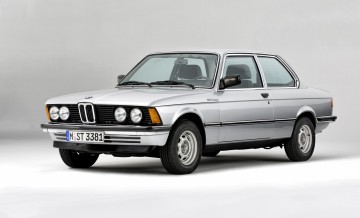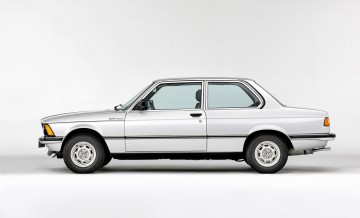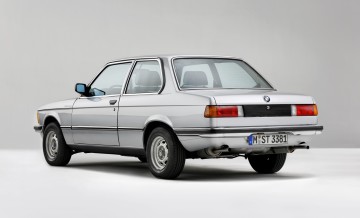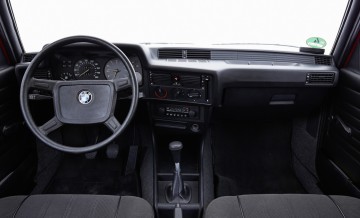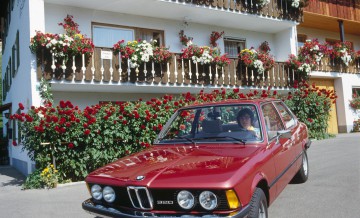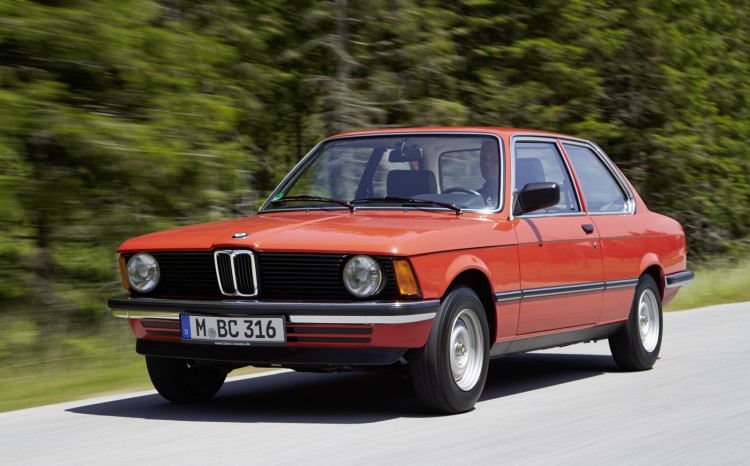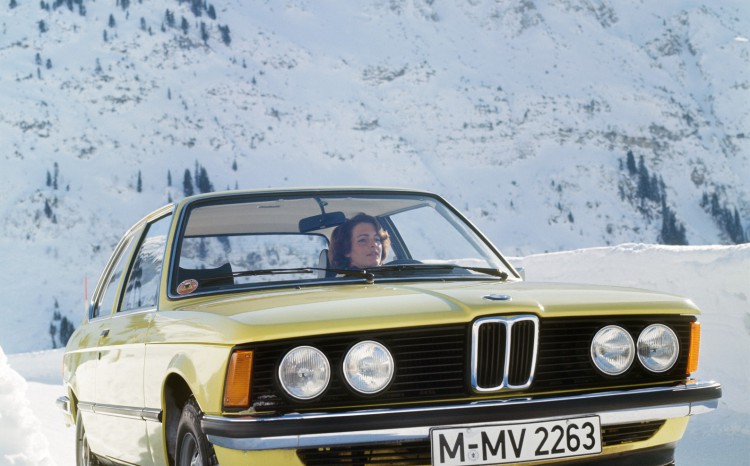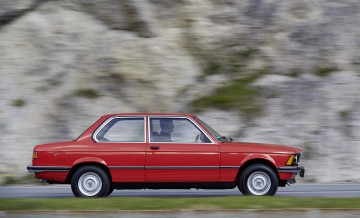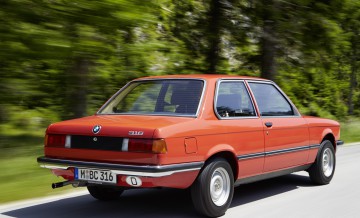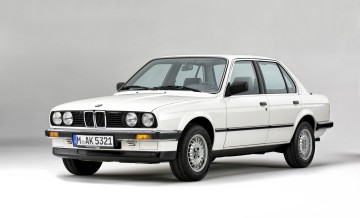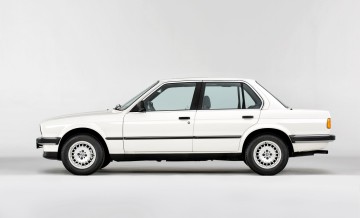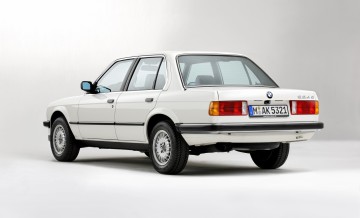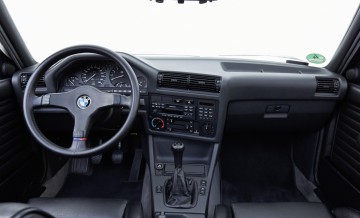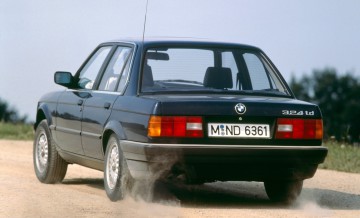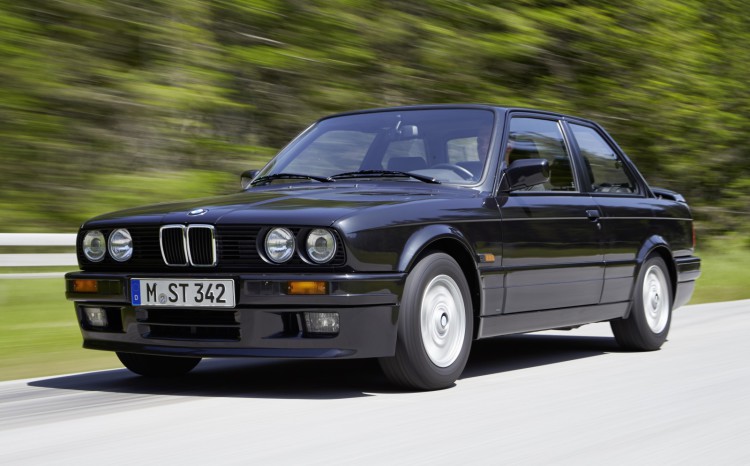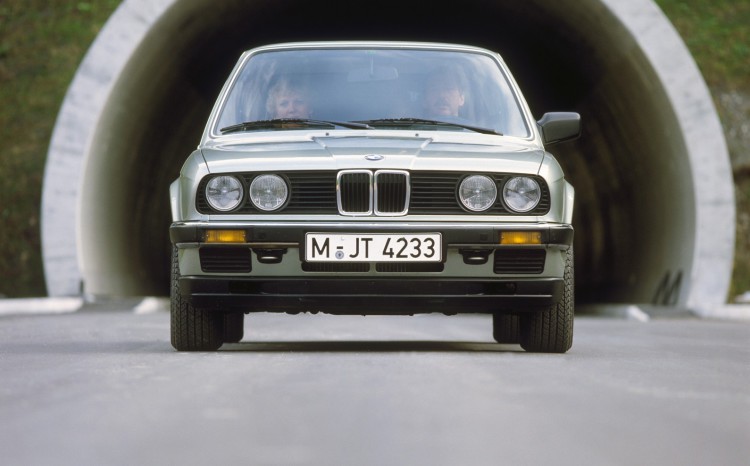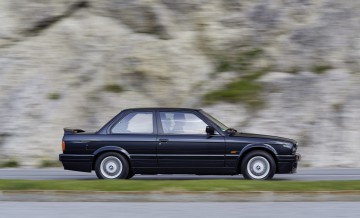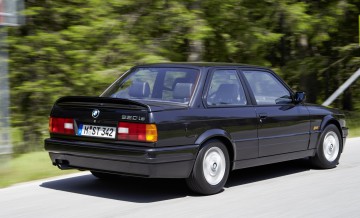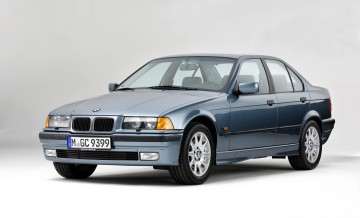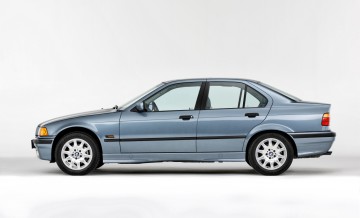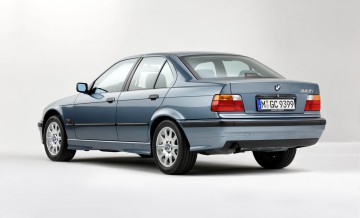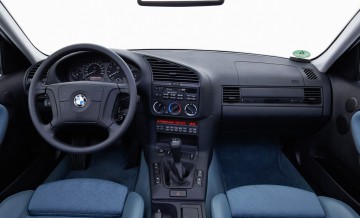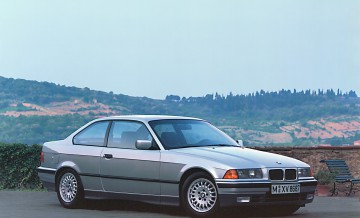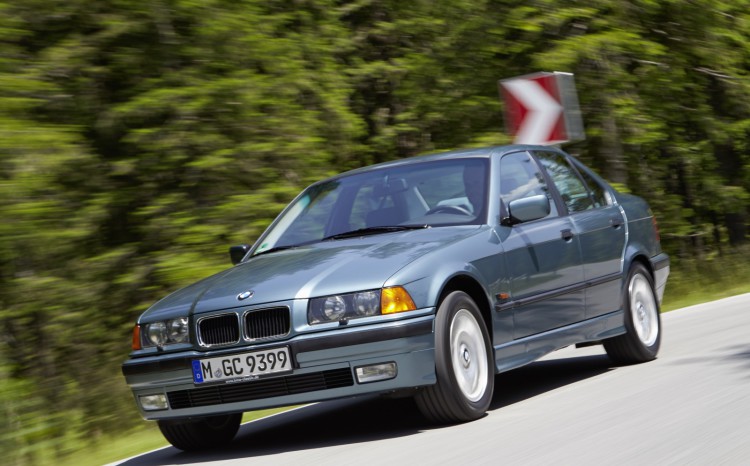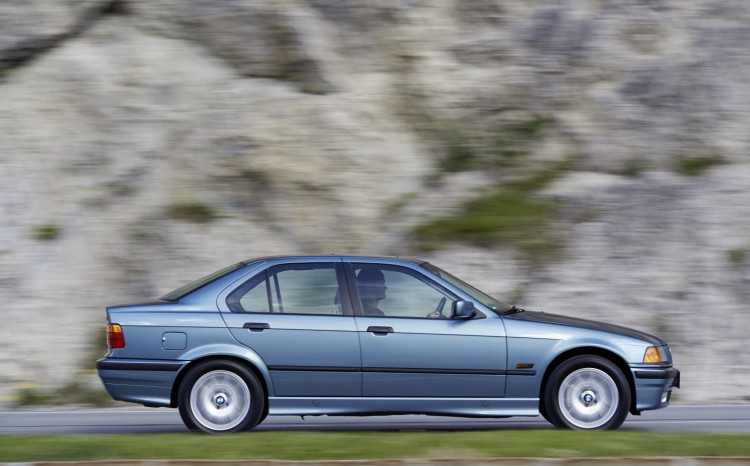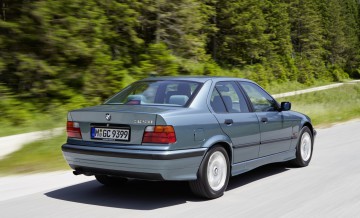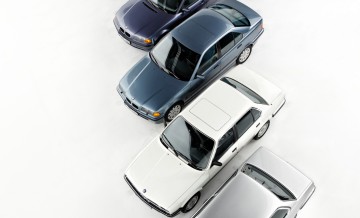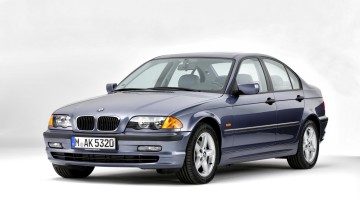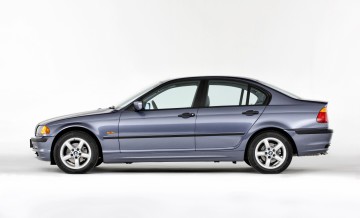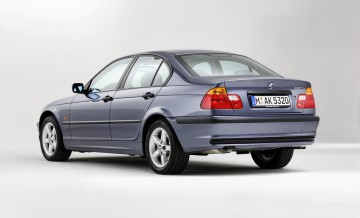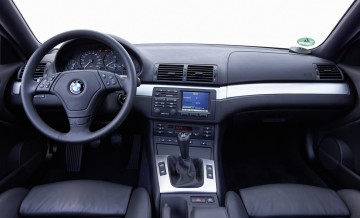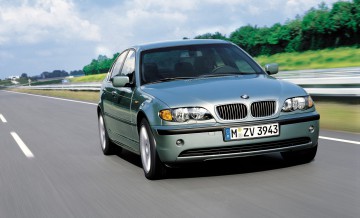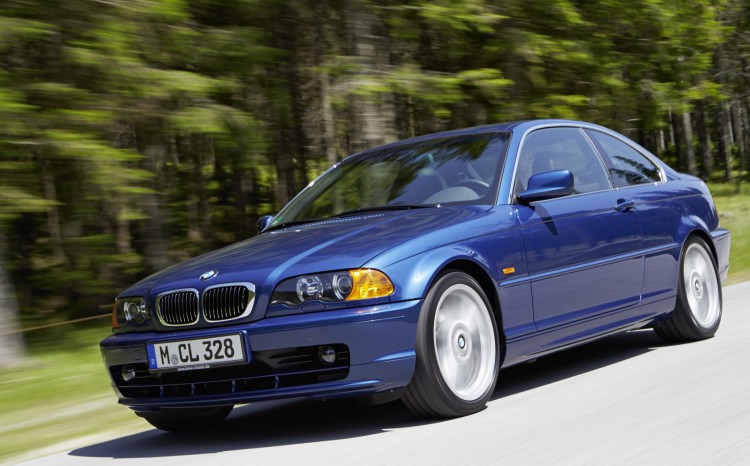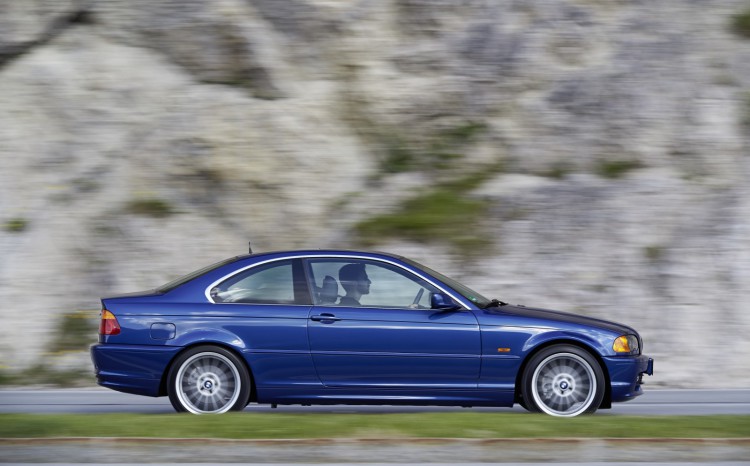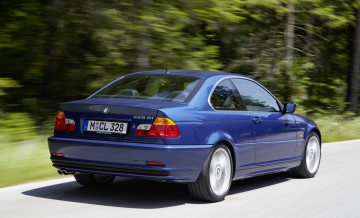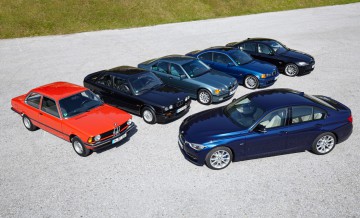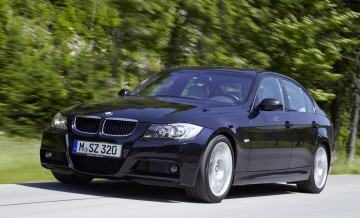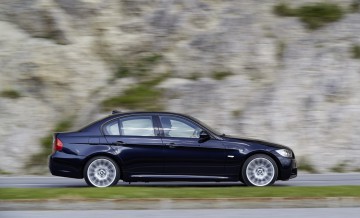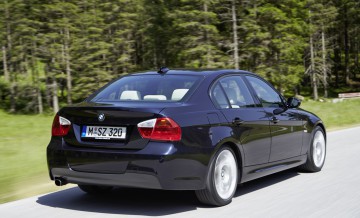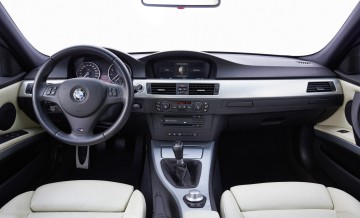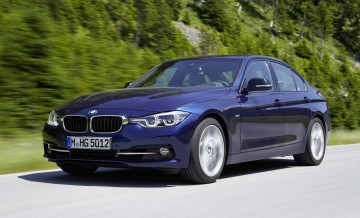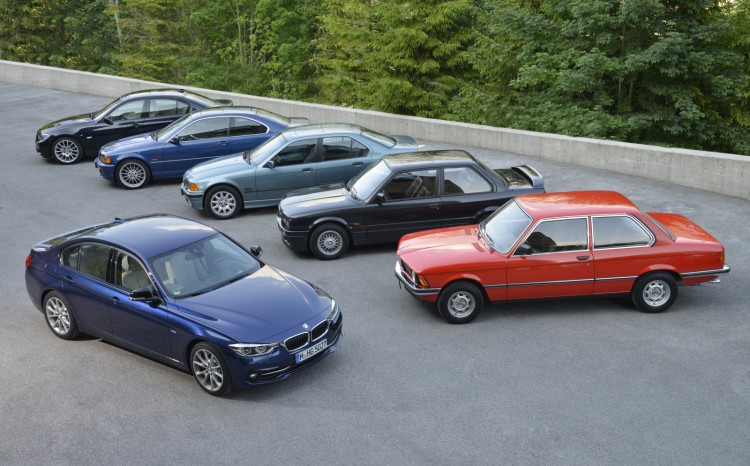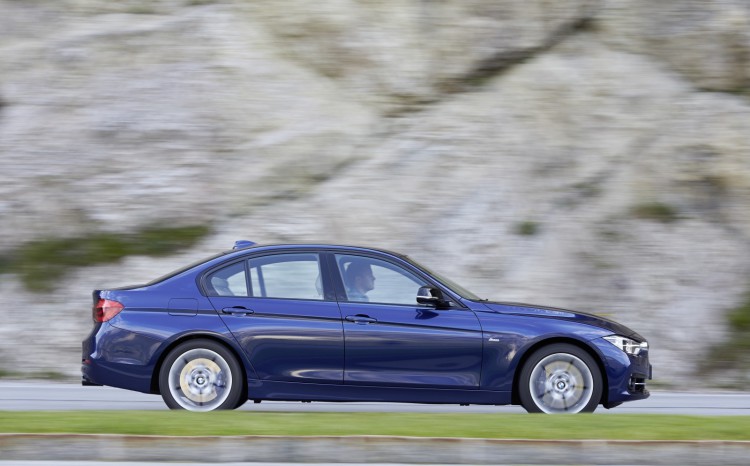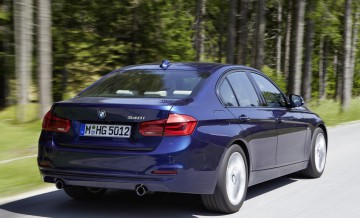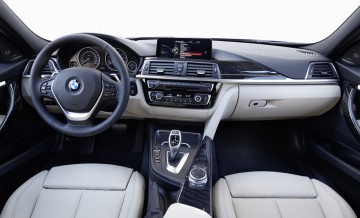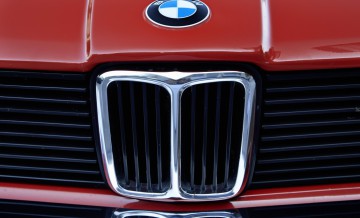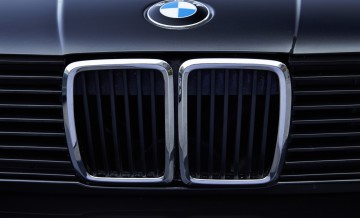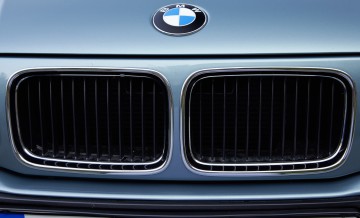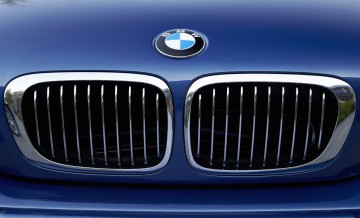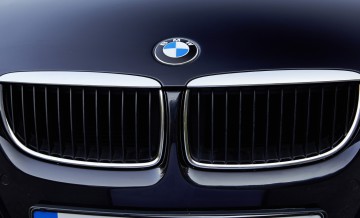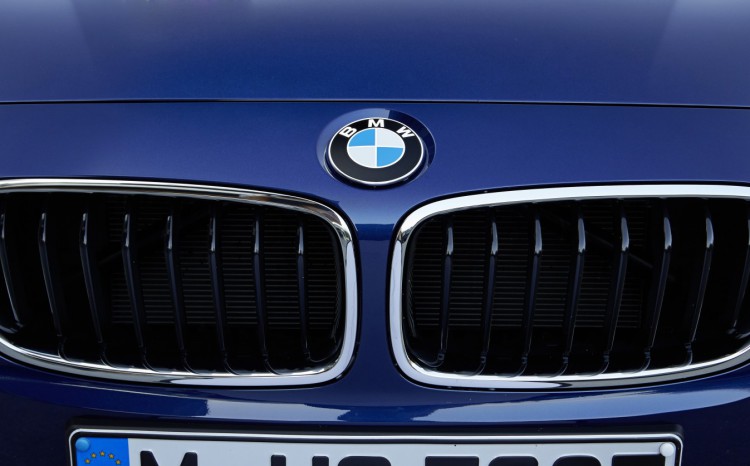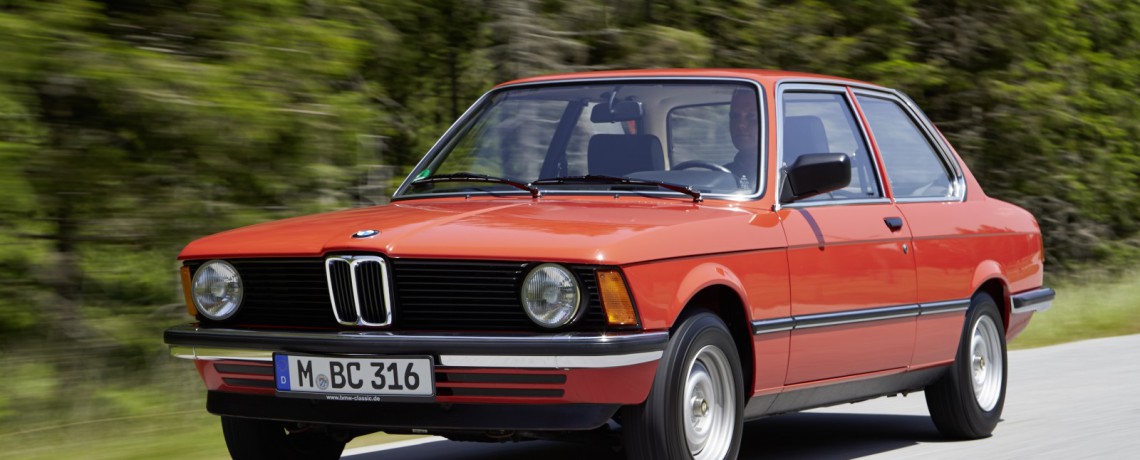
BMW 3 Series celebrates 40 years!
The BMW 3 Series can look back over an extraordinary career path. Among the key milestones along the way have been its success in pioneering a new category of vehicle, establishing itself as the embodiment of driving pleasure in its segment and becoming the world’s top-selling premium car. The model range was launched 40 years ago to replace the already legendary BMW 02, and is now set to enter its sixth generation.
First unveiled at the 1975 International Motor Show (IAA) in Frankfurt, the BMW 3 Series has since developed into both the brand’s most successful model range and an international bestseller. And that makes the 3 Series a highly effective global ambassador for BMW’s core attributes. Its history is testament to the advances achieved by the German carmaker in the areas of sporting ability, efficiency, safety, comfort and connectivity, as well as to the development of BMW design. Again and again, the introduction of trailblazing technological innovations in the BMW 3 Series has also broken new ground in the mid-size class in general. Moreover, for four decades now the BMW 3 Series has led the way with new vehicle concepts that have expanded the brand’s model line-up and injected fresh ideas into the segment as a whole.
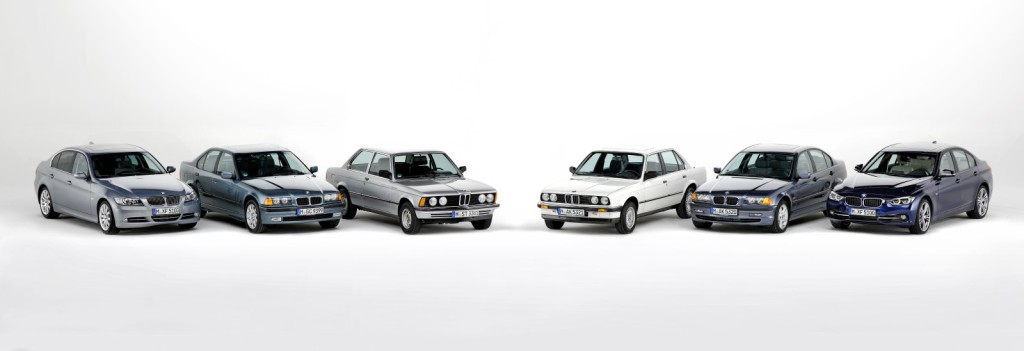
Sporty and efficient: the engines for the BMW 3 Series.
The first generation of the mid-size sedan delighted customers with a level of sporty handling never before offered in this segment, while also impressing with its super-economical engines. Thanks to the performance and sporty, commanding character of those engines, the transfer of power to the rear wheels and the efficiency with which the resultant driving pleasure is conjured up, the BMW 3 Series continues to rise above its rivals to this day. In 1977, two years after the launch of the new model range, the BMW 3 Series became the first car in its class to be available with six-cylinder engines. Further innovations were to follow, including revolutionary injection and engine management systems, ultra-sporty diesel engines and weight minimisation through the use of aluminium and magnesium.
Outstandingly agile, exceptionally safe: the chassis technology of the BMW 3 Series.
Brawny engines and power transfer to the rear wheels have been combined with finely balanced weight distribution and advanced chassis construction from day one of the BMW 3 Series. Back in 1975, drivers of a BMW 3 Series were already guaranteed handling that was sportier than any of its rivals and assured in any situation, thanks to technically sophisticated suspension, extremely precise steering uncorrupted by torque steer and powerful brakes. It is a standard that has been maintained through to the new generation of the car. Each and every component of the chassis may have undergone an impressive process of development over the course of four decades and six generations, but the basic concept underpinning Sheer Driving Pleasure endures. Boasting the most advanced chassis in its segment, the BMW 3 Series continues to set the benchmark for sports performance and handling agility. The BMW 3 Series’ ascent to the top of the tree in terms of agility and safety has also been aided by another innovation. In 1985 the BMW 3 Series became the brand’s first series-produced car to channel its power to the road through all four wheels.
Variety breeds success: the BMW 3 Series model variants.
The most successful model range in the BMW line-up has experienced an uninterrupted programme of expansion since it was first unveiled. A four-door body variant joined the two-door model in the range back in the second generation, and it wasn’t long before the BMW M3 high-performance sports car, the first Touring model and the first Convertible based on the BMW 3 Series were given their premieres. The third generation of the model range saw the distinctively styled BMW 3 Series Coupe bring additional allure to the line-up, while the BMW 3 Series Compact forged a passage into a new vehicle segment. Growth and changes within the model line-up have since been responsible for a succession of landmarks in the history of the BMW 3 Series, introducing innovative concepts which continue to set trends for the segment as a whole to this day. The diversity of models has played a significant role in enabling a variety of target groups to experience the sporting character of BMW 3 Series in different ways. The sixth model generation further extends this attractive selection of distinctive body variants, which are now split between two model ranges: the BMW 3 Series Sedan and BMW 3 Series Touring have been joined by the BMW 3 Series Gran Turismo, and the mid-size model portfolio now also includes the BMW 4 Series Coupe, BMW 4 Series Convertible and BMW 4 Series Gran Coupe.
1. generation BMW 3 Series (E21): 1975-1983
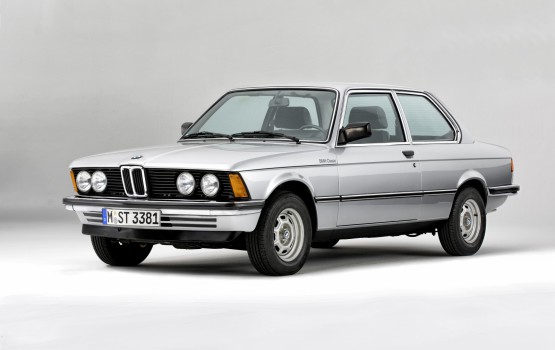
The presentation of the BMW 3 Series in 1975 turned the page to a whole new chapter in automotive history. Although the two-door Sedan displayed distinctive characteristics emphasising its relationship with the BMW 5 Series unveiled three years earlier, the compact and sporting model that eventually made its debut on the market was a totally new car. From the very beginning, the 3 Series concept was tailored to drivers who placed exacting demands on their car, demanded powerful engines and flawless handling, and appreciated the far-reaching safety features previously only offered by luxury-class cars.
Expectations of the new model were high – after all, it was following in the tyre tracks of the internationally successful BMW 02. The BMW 3 Series was charged with the task of combining the sporty, agile character of its predecessor with new qualities in the areas of design, comfort, space and safety. Its new proportions made the BMW 3 Series look significantly larger at first glance than its predecessor, although the 4,355-millimetre-long, 1,610-millimetre-wide and 1,380-millimetre-tall two-door was actually only a few centimetres larger in each respect than the BMW 02. Track widths of 1,364 millimetres at the front and 1,377 millimetres at the rear gave the new kid on the block a powerful stance.
The interior of the BMW 3 Series witnessed the debut of the now familiar driver-focused cockpit design. The vertically stacked controls in the centre of the dashboard were angled clearly towards the driver, making them easier to reach and read. This new development helped to optimise ergonomics and remains a signature feature of BMW models to this day.
The official presentation of the BMW 3 Series – on the day before the opening of the 1975 International Motor Show (IAA) in Frankfurt – saw the Chairman of the BMW AG Board of Management draw particular attention to the BMW 320i. “In our eyes this car is the worthy modern successor to the fabled BMW 2002 tii,” noted Eberhard von Kuenheim. With a helping hand from fuel injection technology, the four-cylinder engine under the bonnet of the BMW 320i produced 92 kW/125 hp. And that was enough to propel it not only to the top of the 3 Series range but also into the highest reaches of car fans’ affections. In the year following its debut, readers of Europe’s biggest-selling motoring magazine voted the flagship 3 Series model “the world’s best sedan” in the class up to two litres displacement. The model range also included the BMW 316, BMW 318 and BMW 320 variants from launch. Their model designations were derived from the size of their engine displacement: 1,573cc, 1,766cc and 1,990cc respectively. The sophisticated four-cylinder carburettor engines combined sporting performance characteristics with very reasonable fuel economy. Even the 66 kW/90 hp entry-level engine in the BMW 316, which weighed just 1,010 kilograms, allowed customers to experience smile-inducing agility and a top speed of 160 km/h (99 mph).
The engine line-up blossomed in spectacular style in 1977, as the lower mid-range welcomed the arrival of six-cylinder engines for the first time. The 2.0-litre engine for the BMW 320 and 2.3-litre unit bestowed on the BMW 323i were designed specially for the BMW 3 Series. The straight-six powering the BMW 323i included features such as electronically controlled engine management and transistor ignition, generated 105 kW/143 hp and accelerated the two-door car from 0 to 100 km/h (62 mph) in just 9.0 seconds.
The BMW 315, powered by a 1.6-litre engine developing 55 kW/75 hp, joined the fray in 1981 as the new entry-level model in the line-up. The same year, BMW 3 Series sales reached the one-million mark. That meant the new model range had outstripped the figure recorded by its predecessor after just six years in production to become the most successful model in the company’s history. Customer satisfaction levels were also exceptionally high. In a survey conducted in 1980, 80 per cent of BMW 3 Series drivers said there was “nothing they could improve” about their car.
A total of 1,364,039 units of the BMW 3 Series were sold up to 1983, of which 4,595 were in “Topcabriolet” trim. This take on the 3 Series recipe was the work of Stuttgart-based coachbuilder Baur, whom customers could commission to conjure any engine variant of the 3 Series into an open-top four-seater with a suitably burly rollover bar.
2. GENERATION BMW 3 SERIES (E30): 1982-1994
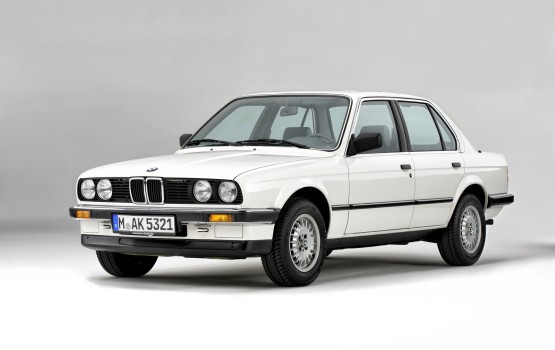
The second generation of the BMW 3 Series, presented in 1982, was a worthy successor to the trendsetting, bestselling original. Wherever you looked, the new model embodied progress and diversity. A new design, optimised aerodynamics, more space and comfort, extra power and additional body and engine variants were all part of the mix.
The new car’s lines were significantly tauter and smoother than those of its predecessor, and its drag coefficient had been reduced by almost 15 per cent. All model variants, regardless of engine size, were now fitted with twin circular headlights as standard. Although the second-generation 3 Series offered four centimetres of extra legroom inside, its body was actually three centimetres shorter than the previous model. The front indicator lights were relocated from the wing tip into the bumper. The characteristic side view was given a fresh interpretation, while a broader B-pillar painted matt black provided a stronger-looking centre. The 35-millimetre-wider track, meanwhile, gave the new car a muscular appearance. To top it all, the BMW development engineers had shaved around 30 kilograms off the car’s weight – despite its more generous equipment levels.
The new BMW 3 Series lined up with further developed four- and six-cylinder engines. For example, the BMW 316 – which produced 66 kW/90 hp and now had an electronically controlled carburettor – boasted a top speed of 175 km/h (109 mph). Developing 77 kW/105 hp from its four-cylinder engine with mechanical injection, the BMW 318i powered to a maximum 184 km/h (114 mph). The six-cylinder models already featured an electronic injection system. The 102 kW/139 hp BMW 323i, for example, recorded a top speed of 202 km/h (126 mph), its five-speed gearbox with overdrive allowing it to post average fuel consumption of just 8.9 litres per 100 kilometres (31.7 mpg imp).
Another engine variant presented at virtually the same time as the BMW 325i majored on economical driving. This was the first time BMW had fitted a diesel engine in its compact Sedan. The BMW 324d featured a six-cylinder in-line unit developing 63 kW/86 hp and hit a top speed of 165 km/h (103 mph). It recorded average fuel consumption of 6.9 litres per 100 kilometres (40.9 mpg imp).
In 1987 the original diesel variant was joined by the BMW 324td. Its new straight-six turbodiesel engine impressed with output raised to 85 kW/115 hp, lower fuel consumption and emissions, and lower levels of noise and vibrations. The key factor in this leap forward, along with the use of a turbocharger, were Digital Diesel Electronics (DDE). This technology brought more sophisticated injection – adjusted to the situation at hand – to diesel engines as well.
A sports car based on the BMW 3 Series also roared into the spotlight at the 1985 Frankfurt Motor Show. The BMW M3 was powered by a 147 kW/200 hp four-cylinder engine with four-valve technology. Like the car’s chassis technology, it was derived directly from the race track, and soon provided evidence of the impressive potential available as a result. The BMW M3 was the brand’s first model also to be fitted – from model year 1987 – with electrically adjustable dampers.
The variety of BMW 3 Series models now available to customers played a major role in ensuring the second-generation car notched up 2,339,251 units in sales, outperforming its predecessor by almost a million cars in the process.
3. GENERATION BMW 3 SERIES (E36): 1989-2000
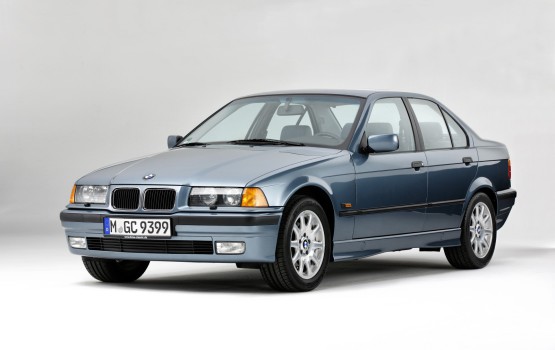
The third-generation BMW 3 Series took to the stage in 1990 with extremely elegant contours and a thoroughly overhauled spread of technology. And it was available from launch as a four-door for the first time. The body had grown significantly in terms of exterior dimensions to create an even more comfortable and safer passenger compartment, and it offered occupants noticeably more space. Those in the rear, for example, could look forward to 30 millimetres of extra knee room. Despite its increase in size, the car’s basic form also displayed an undeniably sporty edge. The long wheelbase, short overhangs, 1,418-millimetre front track and 1,431-millimetre rear track gave a strong hint of the new 3 Series’ outstanding driving attributes. The engines available from launch all developed at least 100 hp. The entry-level 1.6-litre unit in the new BMW 316i, for example, produced 74 kW/100 hp while the BMW 318i had 83 kW/113 hp. The two innovative six-cylinder in-line engines in the line-up both now featured twin camshafts and four valves per cylinder. The BMW 320i developed 110 kW/150 hp and the BMW 325i was good for 141 kW/192 hp. Innovative technology designed to boost performance and reduce fuel consumption also came in the form of VANOS variable camshaft timing. It was first introduced in 1992 in the 210 kW/286 hp six-cylinder engine powering the second-generation BMW M3 and subsequently made the jump into the other six-cylinder models.
The third generation of the BMW 3 Series was also offered with a selection of body variants developed to appeal to additional customer groups. However, the launch order adopted by its predecessor was reversed. The four-door became the default variant for this segment, and the two-door – introduced at the start of 1992 – was no longer a sedan, but an extremely elegant coupe. Although the similarity between the two- and four-door variants was clear, the two variants only shared a handful of parts. The first BMW 3 Series Coupe was a resolutely standalone car. It was also the model on which the BMW M3 was based, it rode three centimetres closer to the road surface and cut an imposing figure with its suitably sporty front end. The classically elegant flank line was the product of an eight-centimetre-longer front end, lower bonnet, almost three-centimetre-shorter roof, wider doors with frameless windows, and a shorter and lower boot lid.
The BMW 3 Series Convertible was the next variant to hit the road in 1993. The open-top 3 Series once again featured a distinctively low shoulderline. It offered space for four people and unbeatable all-year weather protection courtesy of an outstandingly well-insulated soft-top roof. A hardtop could also be fitted as an option.
The third-generation BMW 3 Series in all its variants stayed in production for almost ten years. During this time, it sold a total of 2,745,780 units, once again exceeding the figure recorded by its predecessor with something to spare.
4. GENERATION BMW 3 SERIES (E46): 1998-2005
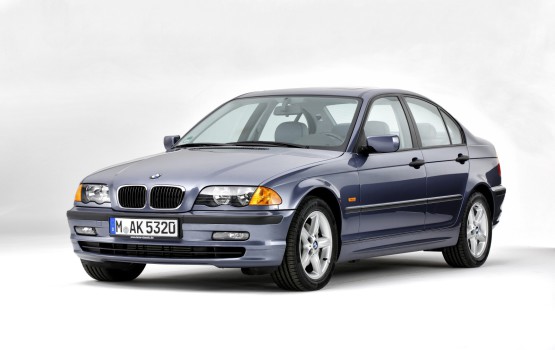
In spring 1998 the fourth generation of the BMW 3 Series set out on the road to the next century riding a wave of stylish continuity and unrelenting technical progress. Its proportions, lines and stylistic elements represented an expression of sporting elegance and left no doubt that the BMW 3 Series had established itself once and for all as the unmistakable original in its segment. The new BMW 3 Series, which was once again launched in four-door sedan form, had grown by four centimetres in both length and width compared to its predecessor. The BMW kidney grille was now integrated into the bonnet and teamed up with twin circular headlights behind clear covers to give the front end of the car a striking character. The dynamic ability of the new Sedan was accentuated by its stretched lines and more prominently arched roofline. Another signature BMW design feature were the L-shaped rear lights.
The fourth-generation BMW 3 Series benefited more than ever from expertise accumulated during the development of models in higher segments. The interplay of the body and chassis, the car’s interior appointments and its safety concept all took their cues from the BMW 7 Series. The newly designed instrument panel looked modern, well sized and high in quality, and equipment features such as a multifunction steering wheel, side airbags in the rear, rain-sensing wipers and a navigation system set new benchmarks in the segment. “The essence of BMW is distilled in the 3 Series,” summed up the testers from motoring magazine Autorevue after their first encounter with the new model.
The selection of available body variants expanded more quickly than in the previous model generation. The new BMW 3 Series Coupe, which was 17 millimetres longer, 18 millimetres wider and 46 millimetres lower to the road than its four-door sibling, took to the stage as early as April 1999. The third variant of the BMW 3 Series – the Touring – joined the line-up later that year, the BMW development engineers continuing to drive forward the idea of the dynamic, elegant and classy five-door car. The new Touring embodied the character of the 3 Series with undoubted clarity, but also displayed its own distinctive talents. It was 46 millimetres longer than its predecessor, 16 millimetres wider and 29 millimetres taller. A Convertible variant was also developed for the fourth generation of the BMW 3 Series model range. The open-top four-seater made its debut in spring 2000.
The new BMW M3 also celebrated its world premiere that year at the Geneva Motor Show. The contouring of its bonnet alone provided an indication of the power lurking beneath. The eye-catching bulge in the centre of the bonnet – the so-called “power dome” – created space for the new six-cylinder in-line engine with displacement of precisely 3,246cc and output of 252 kW/343 hp. In spring 2001 the line-up was expanded further to include the open-top variant of the high-performance sports car – the BMW M3 Convertible.
By the end of 1999 the success of the fourth-generation BMW 3 Series could also be found on record in the statistical data compiled by the Federal Motor Vehicle Office in Flensburg, Germany. The BMW 3 Series ended the year in third place in Germany’s registration statistics – a level of success never before achieved by a representative of this market segment. By the time production of the fourth model generation had come to an end, total sales had climbed to a historical peak for the BMW 3 Series of 3,266,885 units.
5. GENERATION BMW 3 SERIES (E90): 2005-2012
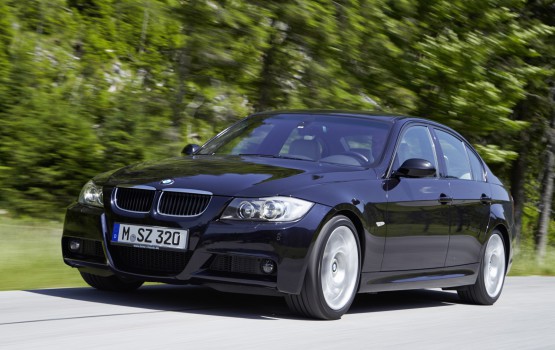
The fifth generation of the BMW 3 Series celebrated its world premiere at the 2005 Geneva International Motor Show. In what was now the regular running order for model range launches, the four-door Sedan was the first model variant to be introduced. Its striking appearance, with short body overhangs, dynamic lines and a progressive design language, imbued it with an unmistakable character from day one. The new symbiosis of powerful and efficient engines, dynamic yet refined driving characteristics, eye-catching design (with the familiar BMW use of forms), a spacious body with impressive torsional rigidity and innovative equipment features met with enthusiastic approval around the world. In its first year post-launch, the new BMW 3 Series was awarded the title “World Car of the Year” in New York.
The far more imposing and powerful aura of the new BMW 3 Series Sedan compared to its predecessor was the result of a more striking design and larger dimensions. Indeed, the new car added 49 millimetres in length, 78 millimetres in width and 10 millimetres in height. This all-round growth was used to the benefit of occupant comfort and safety. However, intelligent lightweight design meant that, despite the car’s extra size and equipment, it was no heavier on the scales.
The BMW 3 Series Coupe introduced in 2006 was also more distinctive than ever and the new BMW 3 Series Convertible introduced in March 2007 was the first open-top BMW to feature a retractable hardtop. The new BMW M3 was also presented in 2007. The high-performance sports car, based on the BMW 3 Series Coupe, boasted a distinctive design exuding high-level athleticism and was powered by a newly developed V8 engine with 309 kW/420 hp. It was a combination that secured the latest M3 a stand-out position in the exclusive ranks of top-class premium sports cars. The introduction of a selection of other body variants in spring 2008 provided even greater scope for individuality. A trio of distinctive characters were now ready for action – the BMW M3 Coupe, BMW M3 Convertible and BMW M3 sedan.
The fifth-generation BMW 3 Series achieved impressive popularity around the world. Sales of the Sedan, Touring, Coupe and Convertible reached a combined total of 3,102,345 units.
6. GENERATION BMW 3 SERIES (F30): 2012 –
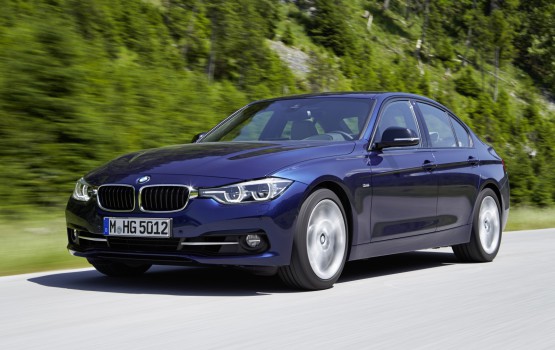
The current, sixth generation of the BMW 3 Series appeared on the market in early 2012. Since then, the alluring array of individual body variants has been extended yet further and, for the first time, split into two model ranges. The BMW 3 Series Sedan and the BMW 3 Series Touring were joined by the BMW 3 Series Gran Turismo, while the mid-size model portfolio now also numbers the BMW 4 Series Coupe, BMW 4 Series Convertible and BMW 4 Series Gran Coupe. The market launch of the new BMW 3 Series Sedan signalled yet another raft of innovations for the mid-size segment in terms of drivetrain, chassis and safety as well as driver assistance systems. The sixth-generation BMW 3 Series Sedan was, for example, the first vehicle in this segment to offer an 8-speed Steptronic transmission.
The new model alignment in the mid-size class also impacted on the designation of the high-performance sports cars conceived for this segment by BMW M GmbH. The tradition-swathed model badge BMW M3 has since 2014 been reserved for the high-performance Sedan, while the new editions of the Coupe and Convertible both bear the designation BMW M4. However, this new naming by no means affects their shared yet individually distinctive proximity to motor sport – something vouchsafed above all by the new straight-six high-revving engine with M TwinPower Turbo technology and 317 kW/431 hp that resides in all three models.
